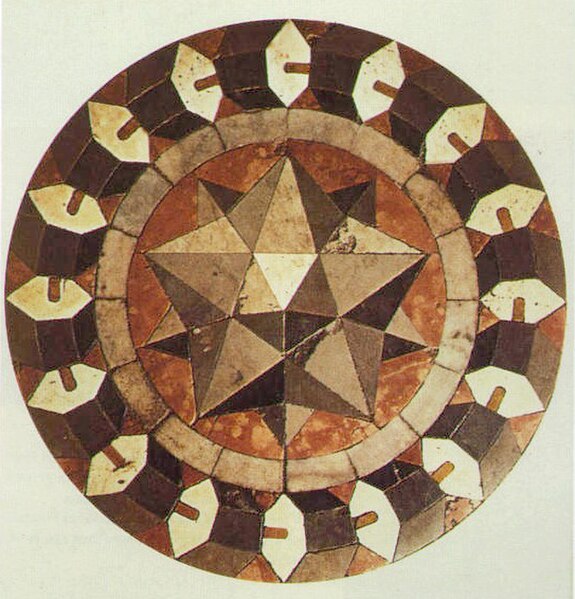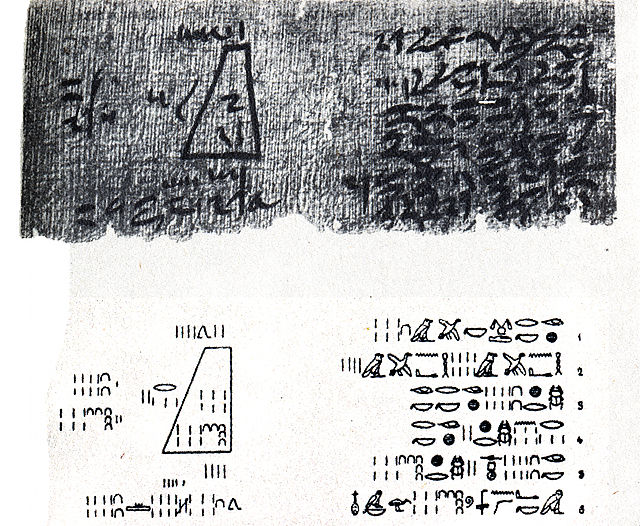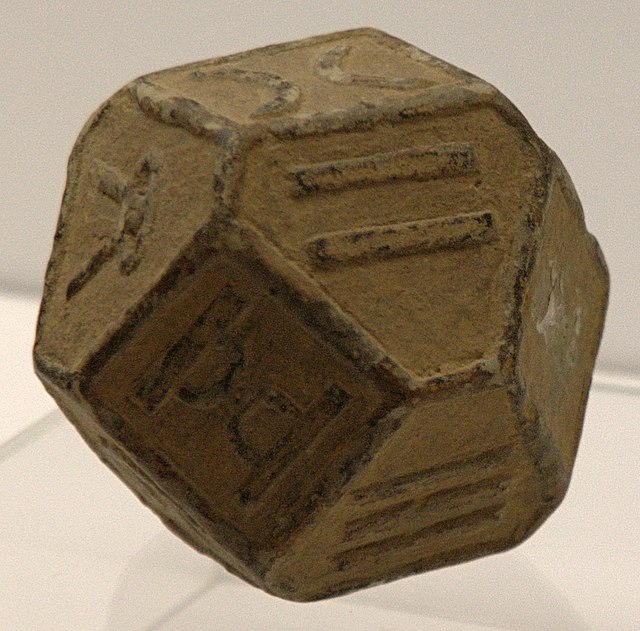In geometry, stellation is the process of extending a polygon in two dimensions, polyhedron in three dimensions, or, in general, a polytope in n dimensions to form a new figure. Starting with an original figure, the process extends specific elements such as its edges or face planes, usually in a symmetrical way, until they meet each other again to form the closed boundary of a new figure. The new figure is a stellation of the original. The word stellation comes from the Latin stellātus, "starred", which in turn comes from Latin stella, "star".
Stellation is the reciprocal or dual process to faceting.
Magnus Wenninger with some of his models of stellated polyhedra in 2009
Marble floor mosaic by Paolo Uccello, Basilica of St Mark, Venice, c. 1430
In geometry, a polyhedron is a three-dimensional shape with flat polygonal faces, straight edges and sharp corners or vertices.
Convex polyhedron blocks on display at the Universum museum in Mexico City
Problem 14 of the Moscow Mathematical Papyrus, on calculating the volume of a frustum
14-sided die from the Warring States period
Doppio ritratto, attributed to Jacopo de' Barbari, depicting Luca Pacioli and a student studying a glass rhombicuboctahedron half-filled with water.






